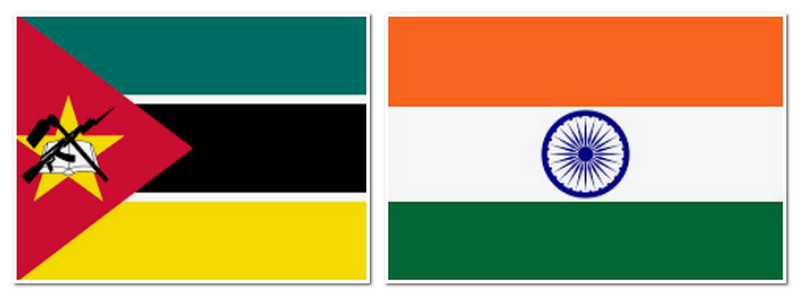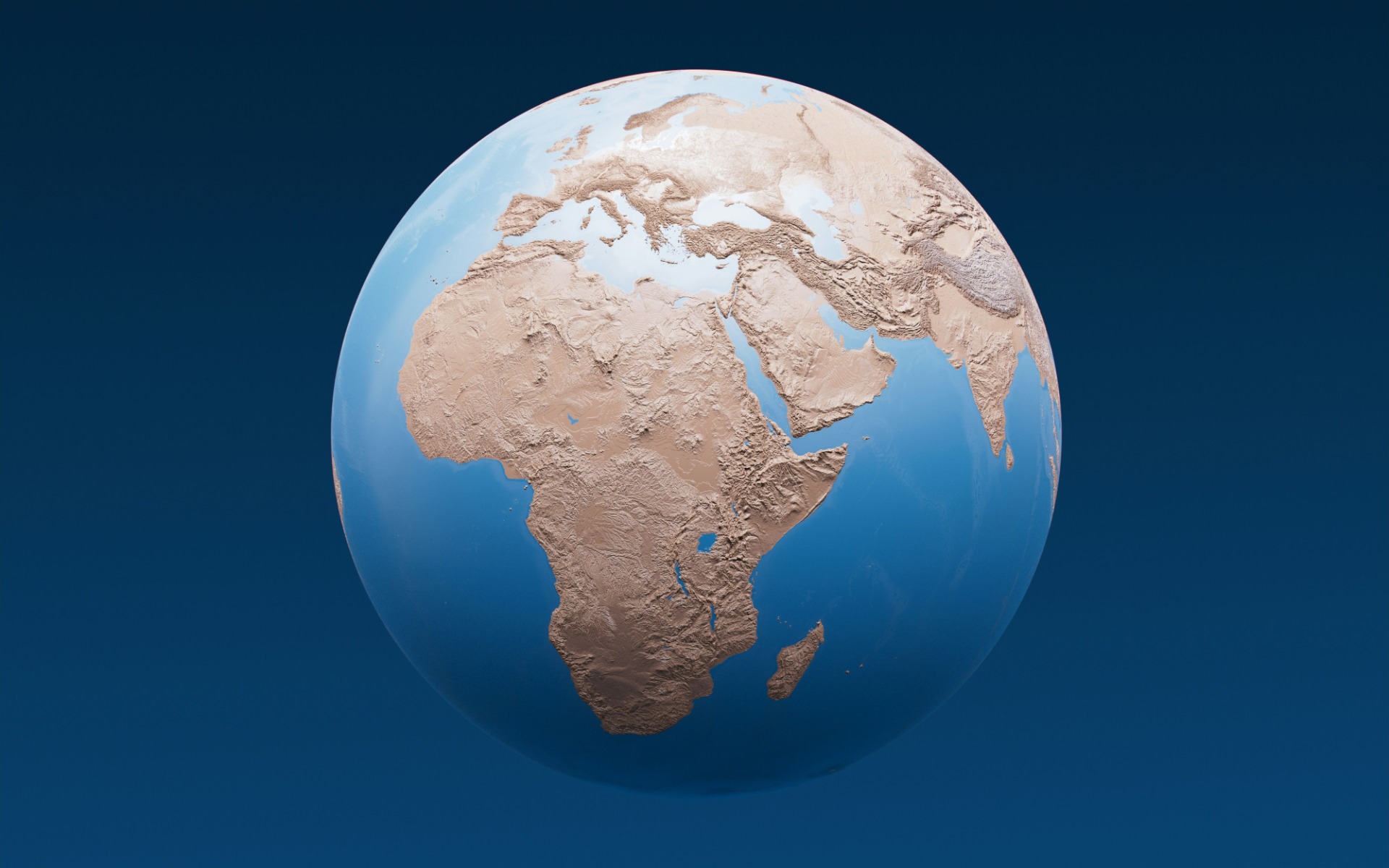Mozambique - India Trade Relations

India-Mozambique Trade Relations: Agreements, Trade Figures, and Future Opportunities
India and Mozambique share a robust and growing trade relationship, underpinned by historical ties, strategic cooperation, and complementary economic strengths. With Mozambique's strategic location along the Indian Ocean and India's status as one of the world's fastest-growing economies, their bilateral trade has expanded significantly, particularly in hydrocarbons, agricultural products, and pharmaceuticals. This blog analyzes the trade relations between India and Mozambique, detailing existing agreements, import and export figures, key traded goods, and future opportunities for deeper economic collaboration.
Trade Relations Overview
India is Mozambique's largest export destination, accounting for 21.1% of its $8.27 billion merchandise exports in 2023, while ranking as its fifth-largest import source at 5.7% of $10 billion in imports. Bilateral trade has more than doubled over the past five years, rising from $2.17 billion in FY 2018–19 to $5.03 billion in FY 2022–23, with hydrocarbons constituting over 35% of the total. This growth reflects India's increasing demand for energy and raw materials and Mozambique's reliance on India for pharmaceuticals, machinery, and consumer goods. The relationship is strengthened by India's investments in Mozambique's infrastructure and energy sectors, facilitated through Lines of Credit (LOCs) and joint ventures.
Both nations engage actively through bilateral and regional frameworks, including the Southern African Development Community (SADC), where Mozambique is a member, and the African Continental Free Trade Area (AfCFTA), ratified by Mozambique in 2023. India's Duty-Free Tariff Preference (DFTP) scheme for Least Developed Countries (LDCs) grants Mozambique duty-free access to 98% of Indian tariff lines, boosting its agricultural and mineral exports. Regular high-level engagements, such as the India-Mozambique Joint Commission and trade events like the 2024 Maputo business roundtable, further solidify ties.
Existing Agreements
Several agreements underpin India-Mozambique trade relations, fostering cooperation in trade, investment, and sector-specific collaboration:
1. Trade Agreement (1982, Under Revision)
Details: Signed in 1982, this agreement established a framework for bilateral trade, focusing on mutual market access. During the second Joint Commission meeting in New Delhi (February 2009), India proposed a revised trade agreement to reflect modern trade dynamics, incorporating services and investment. Mozambique confirmed readiness to sign in August 2013, but the agreement remains under consideration by India as of 2025.
Impact: The existing agreement facilitates trade in goods like petroleum products and agricultural commodities, though its scope is limited compared to modern free trade agreements (FTAs).
2. Double Taxation Avoidance Agreement (DTAA, 2010)
Details: Signed in September 2010, the DTAA prevents double taxation on income, encouraging cross-border investments by Indian firms like Jindal Steel & Power Ltd. and Tata Mozambique.
Impact: Reduces tax barriers, supporting Indian investments in Mozambique's mining and energy sectors, with over 300 Indian companies operating in 2024.
3. Memoranda of Understanding (MoUs)
Micro, Small, and Medium Enterprises (MSMEs, 2010): Promotes cooperation in MSME development, enabling technology transfers and capacity building for Mozambican SMEs.
Mineral Resources (2010): Facilitates joint exploration and development of Mozambique's coal and titanium resources, benefiting Indian firms like International Coal Ventures Ltd. (ICVL).
Oil and Gas (2014): Supports collaboration in hydrocarbon exploration and LNG projects, aligning with India's energy security goals.
Indian Pharmacopoeia (2024): Signed on July 18, 2024, in Maputo, this MoU ensures recognition of Indian pharmaceutical standards, easing exports of affordable drugs to Mozambique.
4. Lines of Credit (LOCs)
Details: India extended a $500 million LOC envelope in 2010, funding projects like:
Food Security ($20 million): Completed, enhancing agricultural productivity.
Solar Photovoltaic Plant ($13 million): Operational, supporting renewable energy.
Rural Water Supply ($20 million): Completed, improving access in rural areas.
Power Supply in Maputo ($250 million): Re-offered in 2019 and signed in August 2020, aimed at upgrading electricity infrastructure.
Housing Project ($47 million): Faces implementation delays.
Impact: LOCs strengthen Mozambique's infrastructure, creating demand for Indian machinery and engineering services, though larger projects face bureaucratic hurdles.
5. Regional and Multilateral Frameworks
SADC and AfCFTA: Mozambique's SADC membership and AfCFTA ratification (2023) align with India's trade goals. AfCFTA's tariff reductions complement India's DFTP scheme, boosting Mozambican exports like pigeon peas.
India-Africa Forum Summit: Regular summits (e.g., 2015) reinforce trade commitments, with India pledging $10 billion in LOCs to Africa, including Mozambique.
World Trade Organization (WTO): Both nations, WTO members (Mozambique since 1995, India since 1995), adhere to multilateral trade rules, though Mozambique benefits from LDC preferences.
Import and Export Figures
Bilateral Trade Volume
Total Trade (FY 2022–23): $5.03 billion, up from $2.17 billion in FY 2018–19, with hydrocarbons driving over 35% of the value.
2023 Exports from Mozambique to India: $1.74 billion (21.1% of Mozambique's $8.27 billion total exports).
2023 Imports from India to Mozambique: $807.02 million (5.7% of Mozambique's $10 billion total imports).
Trade Balance: Mozambique enjoys a trade surplus with India, exporting $1.74 billion versus importing $807.02 million, driven by high-value coal and gas exports.
Key Export Goods from Mozambique to India
Mozambique's exports to India are dominated by natural resources and agricultural products:
Coal and Coke (50%): Valued at approximately $870 million, primarily from Tete's Moatize basin, meeting India's industrial demand.
Natural Gas (20%): LNG from the Coral South FLNG project (started 2022), with exports growing as India seeks energy security.
Agricultural Products (10%): Pigeon peas ($50 million), cashew nuts, and sesame seeds, benefiting from India's DFTP scheme.
Titanium Ores and Gemstones (5%): Includes rubies ($27.8 million growth in 2022) from Montepuez, Nampula.
Key Import Goods from India to Mozambique
India's exports to Mozambique focus on industrial and consumer goods:
Petroleum Products (20%): Refined fuels for Mozambique's transport and industrial sectors.
Pharmaceuticals (15%): Generic drugs and APIs, critical for Mozambique's healthcare, boosted by the 2024 Pharmacopoeia MoU.
Engineering Goods and Machinery (15%): Includes agricultural equipment, pumps, and construction machinery, supporting LOC-funded projects.
Rice and Cereals (10%): Staple foods addressing Mozambique's food security needs.
Textiles, Fabrics, and Bicycles (5%): Consumer goods for urban markets.
Ceramics, Glassware, and Plastics (5%): For construction and household use.
Trade Trends
Export Growth: Mozambique's agricultural exports to India grew by $162.9 million in 2022, driven by pigeon peas and sesame, while rubies rose by $27.8 million.
Import Surge: Mozambique's imports of Indian capital goods doubled in 2022, with machinery for LNG and construction projects comprising 41.4% of total imports.
Trade Deficit: Mozambique's overall trade deficit ($1.73 billion in 2023) is partly offset by its surplus with India, but capital goods imports for LNG projects keep the balance negative.
Future Opportunities
India and Mozambique's trade relationship holds significant potential, driven by complementary economic needs, regional integration, and emerging sectors. Below are key opportunities, supported by recent developments:
1. Energy Sector Expansion
Opportunity: Mozambique's LNG projects, like TotalEnergies' $20 billion Mozambique LNG and ExxonMobil's Rovuma LNG, position it as a top-10 global supplier by 2030. India, aiming to increase natural gas's share in its energy mix to 15% by 2030, offers a stable market. Indian firms like Bharat Petro Resources Ltd. (BPRL) and GAIL can expand exploration and offtake agreements.
Potential: LNG exports could double to $1 billion annually by 2030, with India's $70 billion energy transition investments creating demand. The Oil and Gas MoU (2014) supports joint ventures.
Recent Development: A 2024 Maputo business roundtable highlighted India's interest in Mozambique's gas sector, with Indian Oil Corporation exploring partnerships.
2. Agricultural Value Chains
Opportunity: Mozambique's agricultural sector (70% of workforce) can leverage AfCFTA and India's DFTP to export processed goods like cashew nuts, pigeon peas, and sesame to India's 1.4 billion market. India's expertise in agro-processing can support Mozambique's ProSAVANA initiative in the Nacala Corridor, targeting $500 million in investments.
Potential: Processed agricultural exports could grow 30%, adding $200 million by 2030, with SMEs benefiting from AfCFTA's 2025 Kenya shipment model.
Recent Development: India's 2024 food security workshops in Maputo trained 300 Mozambican farmers, aligning with AfCFTA's SME focus.
3. Pharmaceuticals and Healthcare
Opportunity: The 2024 Indian Pharmacopoeia MoU facilitates exports of affordable generics, addressing Mozambique's healthcare gaps (30% of population lacks access). India's pharmaceutical industry ($50 billion) can supply APIs and vaccines, while joint ventures establish local production.
Potential: Pharmaceutical exports could rise 20% ($160 million) by 2030, with India supporting Mozambique's vaccine manufacturing under the India-Africa Health Summit framework.
Recent Development: India donated Covid-19 PPE kits and vaccines in 2022, strengthening healthcare ties.
4. Defence and Security Collaboration
Opportunity: Mozambique's Cabo Delgado insurgency (2017–2023) highlights the need for security cooperation. India's defence industry, showcased at the India-Mozambique Defence Industrial Interaction (April 2024, Maputo), offers equipment, training, and cybersecurity solutions for Mozambican forces.
Potential: Defence exports ($50 million by 2030) and joint training programs could enhance stability, supporting LNG and port operations.
Recent Development: Over 20 Indian defence firms engaged Mozambican officials in 2024, exploring procurement partnerships.
5. Infrastructure and Renewable Energy
Opportunity: Mozambique's infrastructure gaps (19% paved roads) and energy needs (60% rural electrification) align with India's expertise in construction (AFCONS Infrastructure) and renewables (Aditya Birla Group). New LOCs can fund roads, railways, and solar projects, building on the $250 million Maputo power project.
Potential: Infrastructure exports could reach $500 million by 2030, with solar projects adding 500 MW, creating 5,000 jobs.
Recent Development: The completed $13 million solar plant (2010 LOC) sets a model for future renewable collaborations.
6. Digital and IT Services
Opportunity: India's IT sector ($250 billion) can support Mozambique's digital transformation, including port logistics (e.g., Nacala's customs systems) and e-governance. The India-Africa Forum Summit emphasizes digital trade under AfCFTA.
Potential: IT service exports ($100 million by 2030) could enhance Mozambique's trade efficiency, reducing port clearance times by 20%.
Recent Development: Indian firms like TCS participated in a 2024 Maputo tech expo, exploring digital solutions for Nacala Port.
Challenges
Despite the opportunities, several challenges could hinder trade growth:
Insurgency: Residual risks in Cabo Delgado (2024 attacks displaced 67,000) threaten LNG and port operations, deterring investment.
Infrastructure Bottlenecks: Slow customs clearance and unpaved roads (81% of 30,562 km) increase trade costs by 15%.
Governance Issues: Corruption, such as 2023–2024 pigeon pea export restrictions, and the 2016 "hidden debt" scandal ($2 billion) reduce investor confidence.
Trade Barriers: High Mozambican customs duties and non-tariff barriers (e.g., port charges) limit Indian SME exports.
Implementation Delays: Large LOC projects, like the $47 million housing initiative, face bureaucratic hurdles, slowing trade benefits.
summary
India-Mozambique trade relations, valued at $5.03 billion in FY 2022–23, are a cornerstone of their strategic partnership, driven by Mozambique's coal, gas, and agricultural exports and India's pharmaceuticals, machinery, and consumer goods. Agreements like the 1982 Trade Agreement, 2010 DTAA, and 2024 Pharmacopoeia MoU, alongside India's $500 million LOCs, foster cooperation, though delays in large projects persist. Mozambique's $1.74 billion exports to India far exceed its $807.02 million imports, creating a trade surplus. Future opportunities in LNG, agriculture, pharmaceuticals, defence, infrastructure, and IT could add $2 billion to bilateral trade by 2030, supported by AfCFTA and SADC frameworks. Addressing insurgency, infrastructure gaps, and governance challenges will be critical to unlocking this potential, cementing India and Mozambique as key partners in Southern Africa's economic growth.
